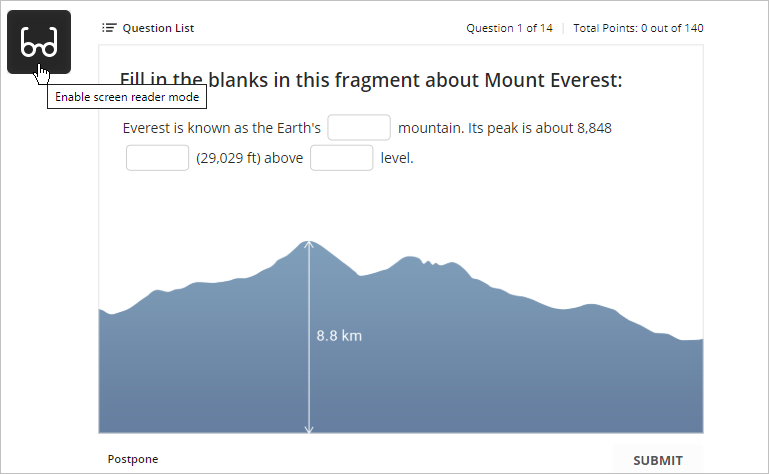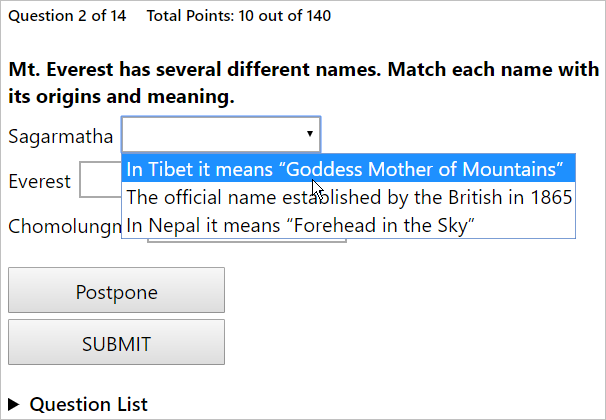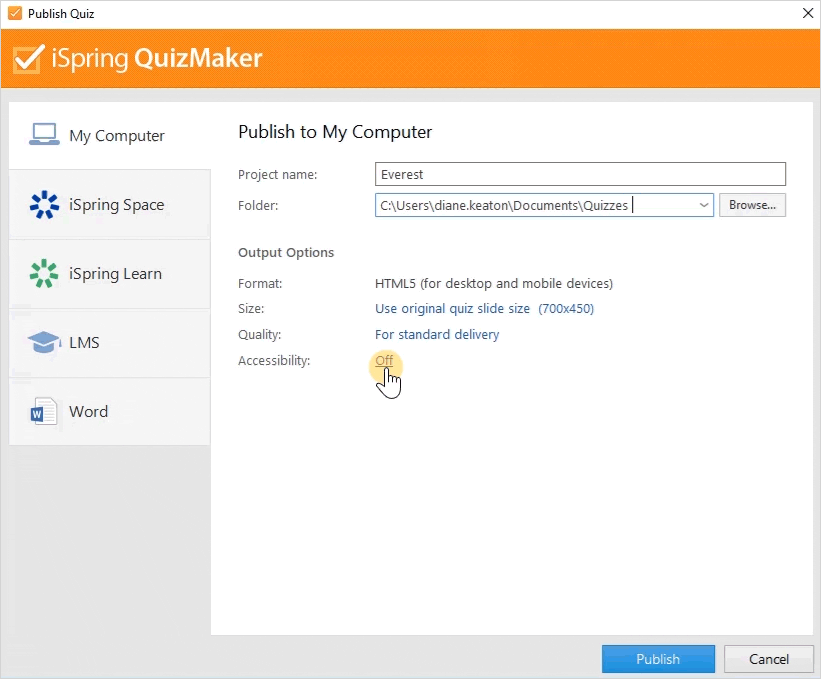Accessibility: WCAG Compliance and Section 508
Now, eLearning authors can create accessible content for users with visual impairments.
The option to create accessible content helps authors to comply with Section 508 of the Rehabilitation Act of 1973, which requires that electronic information be available for individuals with disabilities. Despite the fact that Section 508 applies only to federal agencies, many other businesses and organizations aim to make their content fully accessible, just for the sake of making the world a better place to live for people with impairments and reaching a larger audience with no exclusions.
You can create tests and surveys which users with a visual impairment can easily take. To create accessible quizzes, you don’t have to make different versions or master a new tool – you just build a quiz in iSpring QuizMaker as you usually do, and tick a single checkbox.
iSpring Suite creates tests in accordance with Web Content Accessibility Guidelines (WCAG) 2.1.
A special publishing format allows learners to switch to the accessibility mode by clicking on a button.

Here’s how the same survey question looks in different modes:
Regular Mode
Accessibility Mode
Differences of the Accessibility Mode
Here’s what you can expect from the accessibility mode:
- Perceivable texts. Clear fonts and high contrast make it easy for a person with a visual impairment to read the text on the screen.
- Minimalistic layout. Quizzes include only the most necessary elements, which keeps the interface clear of distractions. Such neat and succinct slides are easy to navigate for those who use only a keyboard to work on a computer.
- Screen reader-friendly content. Screen readers, as the name suggests, turn text into speech and allow users to navigate with the keyboard, e.g. jump between elements, select checkboxes, and fill in fields. This way, people with visual impairments can use computers without anyone’s assistance.
If digital content isn’t optimized for screen readers, there might be issues. For example, a screen reader might voice content in the wrong order or be unable to activate checkboxes.
Tests created with iSpring Suite are perfectly recognized by the most popular screen readers: JAWS, VoiceOver, and NVDA.
Creating an Accessible Test
- Create a new quiz in iSpring QuizMaker or open an existing one. Then, in the Form View tab just add a couple of questions to be able to publish the quiz. If you add some content in Slide View for example pictures or shapes, they won’t appear in the accessibility mode after publishing.

- After your test is ready, click Publish on the toolbar.

- In the Publish Quiz window select the My Computer tab and in the Accessibility field click on the Off link.
- Check Enable screen reader mode and choose a language.
A screen reader pronounces text in the language you set, and if it doesn’t match the actual language of your quiz, the screen reader will voice it over with a strange accent. - Your quiz is all set! Now, click the Publish button.

Important:
- Rely on text rather than on images to convey the important info. Include meaningful data in the question wording or, at least, add alternative text (alt-text) to a picture.
- The same goes for videos: don’t forget that some of your learners are only able to hear it, not see it.
- Hotspot and Drag-and-drop questions don’t work in the accessibility mode. In an LMS, these questions will be reported as unanswered.
- For now, the accessibility mode is available only on desktop devices.